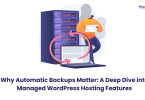But here’s the catch most redesigns end up being expensive makeovers that please internal teams but don’t move the metrics that matter. A fresh coat of digital paint won’t fool anyone for long. Users still drop off, sales still stall, and the checkout still bleeds visitors somewhere along the way. The uncomfortable truth? A WordPress redesign isn’t about looking trendier, it’s about making the whole thing actually work better.
If you want your redesign to pay for itself, you have to treat it as a strategic project, not a creative indulgence. The goal isn’t applause. It’s conversions. That’s what keeps a site alive.
And if you want to benchmark how professionals handle performance-focused design, take a look at this practical roundup of the top 10 Shopify web design agencies. Even if you’re running WordPress, you’ll pick up patterns: research-driven structure, UX rigor, and results that can be measured, not just admired.
Table of Contents
Table of Contents
Why so many redesigns fail (and what the survivors do differently)
Let’s be blunt. Most redesigns fail not because they’re ugly, but because they’re directionless. Teams chase trends instead of clarity. They make decisions in rooms full of opinions, not data. The end result? A prettier site that performs worse.
Common mistakes pop up everywhere:
- Replacing clear navigation with “creative” menus nobody understands.
- Prioritizing fancy animations over page speed.
- Writing clever taglines instead of clear value propositions.
- Launching without tracking or benchmarks, so you never really know if it worked.
The irony is painful: companies spend months perfecting a design that users abandon in seconds.
Successful redesigns, on the other hand, do something deceptively simple, they start with user behavior. They ask: what do people come here to do, and what’s stopping them? Then they fix exactly that, nothing more.
The small design changes that actually drive conversions
The web is full of advice about color psychology and button shapes. Most of it’s noise. Conversion gains come from clarity, structure, and frictionless interaction. Let’s unpack the handful of details that truly matter.
Clarity beats cleverness
Your homepage isn’t a puzzle. Visitors shouldn’t need to decode what your company does. Within three seconds, they should see a headline that says exactly what you offer and how to act on it. Think plain, active language. “Get faster deliveries” beats “Reimagining the logistics experience.” Every unnecessary word costs you clicks.
Visual hierarchy that feels effortless
Good design tells people where to look next. You do that through contrast, scale, and spacing, not by shouting in bright colors. A strong headline, a short intro, a single call-to-action. When you remove distractions, your conversions quietly rise.
Trust signals in plain sight
People are skeptical online. They need reasons to believe. Add social proof: logos of real clients, quick testimonials, clear security badges, a visible “About” link. Even showing your team’s faces helps. Conversion isn’t only logical, it’s emotional.
Shorter journeys, fewer choices
Every extra click is a chance for doubt. Simplify paths. Tighten checkout flows. Limit menu items. Give visitors one clear next step on each screen. The most profitable redesigns often come from removing, not adding.
Mobile first, always
More than half of your users are on mobile, yet many “modern” sites are still optimized for large monitors. On a phone, people are impatient. Make buttons thumb-friendly, forms short, text readable without zooming. If something feels clumsy on a small screen, fix it first.
Redesigning without losing your bearings
Too many teams hit “publish” on a new design and simply hope it converts better. That’s not strategy, that’s gambling.
Treat your redesign as a sequence of experiments.
- Start with data. Before changing a pixel, record how users behave now. Where do they click? Where do they drop off? Tools like Hotjar, Clarity, or even Google Analytics give you the story.
- Create hypotheses. Not “let’s make it look cooler,” but “reducing form fields from eight to five will lift submissions by 20%.”
- Test one big variable at a time. If you change everything, colors, copy, layout, you’ll never know what worked.
- Run tests long enough. One week of data proves nothing. Wait for real patterns.
- Watch secondary effects. A flashy homepage might get more clicks but lower order value. Measure the whole funnel.
This process might sound slow, but it’s faster than rebuilding the site again six months later because “something feels off.”
The real economics of redesigning a WordPress site
A redesign isn’t cheap, but neither is leaving money on the table.
Your upfront costs
- UX research and wireframes
- Design and copywriting
- Development time and QA
- New photography or brand visuals
- Plugin updates, staging environment, hosting tweaks
Your long-term gains
- Higher conversion rate with the same ad spend
- Fewer support tickets thanks to clearer UX
- Lower bounce rate and improved SEO signals
- Faster performance and better retention
But it only works if the redesign solves real friction points. “New colors” don’t move numbers. Shorter paths, faster pages, and clearer copy do.
Start with research, not opinions
Every successful redesign begins with curiosity. Before sketching wireframes, go talk to your users, or at least watch what they do.
- Session recordings show where people hesitate or scroll past key content.
- Heatmaps reveal ignored sections or confusing CTAs.
- Exit surveys can capture the “why” behind abandonment.
- Analytics funnels expose which step leaks the most conversions.
You don’t need a huge budget. Five recorded sessions and one solid survey can expose 80% of your usability issues.
The rule is simple: fix what’s broken for users, not what’s boring for you.
The WordPress side of performance and stability
A gorgeous design means nothing if your tech stack can’t keep up. WordPress gives you flexibility, but it also tempts you to over-customize. Stay disciplined.
- Pick a light, modular theme instead of an all-in-one template. Less code means faster pages.
- Audit plugins every quarter. Deactivate duplicates and outdated tools.
- Use a CDN if you serve global audiences.
- Switch to modern image formats like WebP, and enable lazy loading.
- Keep caching turned on at every layer, browser, server, plugin.
- Prioritize accessibility: readable contrast, keyboard navigation, and descriptive alt text. It’s not just compliance; it’s good UX.
A site that feels instant builds trust subconsciously. Visitors don’t analyze load time, they just stay longer.
Copy: your most underused conversion tool
Design gets attention. Words close the deal. During a redesign, your copy deserves as much love as your layout.
- Replace corporate jargon with plain benefits. “Faster checkout, fewer clicks” says more than “streamlined digital solution.”
- Speak to pain points first, solutions second.
- Keep calls-to-action short and directive: “Book a demo,” “Get your quote,” “Start now.”
- Structure long pages like a story: problem → proof → solution → action.
- Sprinkle microcopy near forms, small phrases like “We’ll never spam you” can boost trust instantly.
Remember: you’re not writing for search engines; you’re writing for tired humans deciding in five seconds whether to stay or leave.
The team behind a successful redesign
Redesigns fail when everyone’s job is unclear. They succeed when each person owns their part of the outcome.
- Product owner defines what success looks like.
- UX designer builds flows based on actual user goals.
- Developer keeps everything fast, responsive, and stable.
- Copywriter ensures the voice fits the audience.
- Analyst tracks metrics and reports impact.
- QA testers make sure nothing breaks before launch.
And someone, ideally you, has to keep everyone honest. When a design choice looks nice but hurts conversions, say so.
Launch without drama: a checklist that works
- Test every form, on mobile and desktop.
- Check analytics and event tracking before launch.
- Measure Core Web Vitals and page speed.
- Validate all main CTAs.
- Have a rollback plan in case numbers drop.
- Communicate changes to support and marketing teams.
Soft-launching to a small user group is smart. Let them find what you missed, then roll out widely. The quieter your launch, the smoother your life.
The usual traps (and how to dodge them)
- Over-customization: your future self will curse those bespoke widgets. Keep it modular.
- Ignoring speed: design means nothing if the site lags.
- No accessibility checks: alienates users and risks compliance issues.
- Redesigning everything at once: makes testing impossible.
- No measurement plan: you can’t improve what you don’t measure.
Avoid these, and you’re already ahead of most website relaunches.
What success actually looks like
A few weeks after launch, watch your numbers quietly shift. Bounce rates drop. Forms get filled more often. Support emails about “where to find” things start to fade. You’ll sense it before you even check the data, a smoother rhythm to how people use your site.
Three months in, the benefits start compounding. You’re spending the same on ads but closing more deals. Conversion curves tick upward. Your content team finds it easier to publish because the new structure is cleaner. Everything just feels lighter.
That’s when you know the redesign worked, when it stops being the main topic in meetings and becomes the invisible engine behind growth.
If short: what to remember
A WordPress redesign isn’t an art project. It’s a business move. You’re not chasing trends; you’re removing friction.
Start with user data. Strip away clutter. Make every pixel and word earn its place. Test changes like a scientist, not a gambler. Keep the site lean, fast, and focused on clarity.
Do that, and your new design won’t just look better, it’ll work better. And in a world drowning in shiny, forgettable websites, that’s the only kind of beauty that matters.














